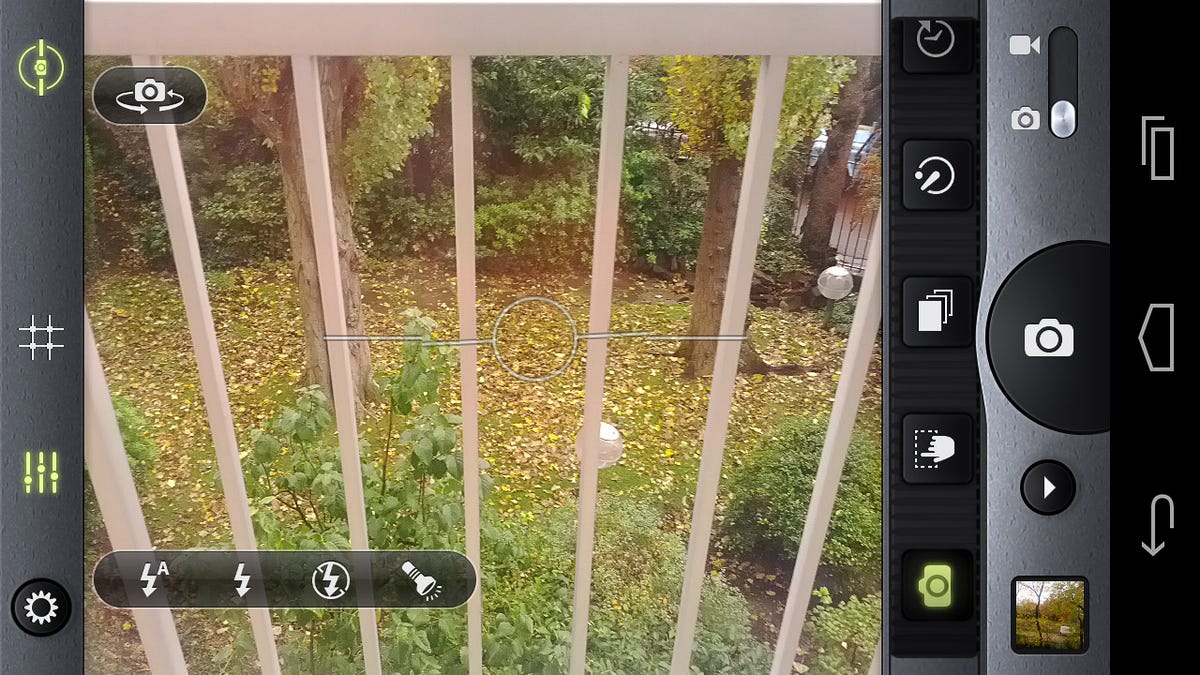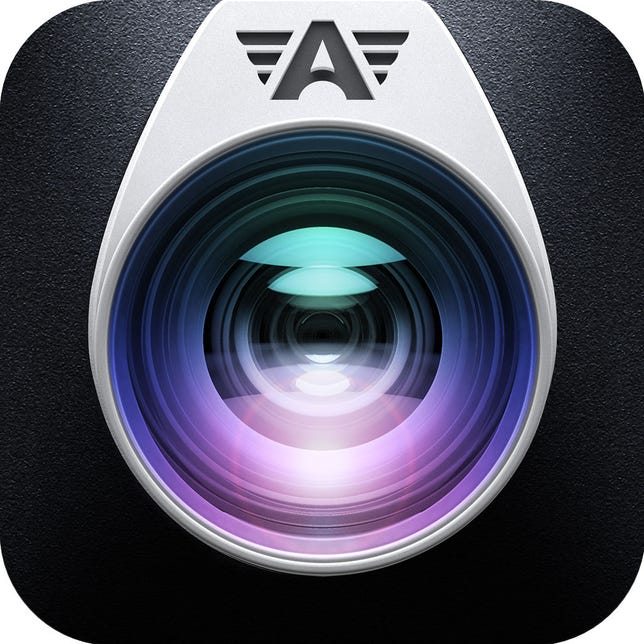SmugMug’s Camera Awesome, a well-reviewed iOS app for taking and editing photos, has arrived on Android, too. But it wasn’t easy getting it there.
For the SmugMug programmers behind the $3 app, it took three tries wrestling with the difficulties of Android development before Tuesday’s release was possible. The company began developing the two versions at the same time, but the Android version took 20 months longer to build because its first two development efforts faltered.
Chief Executive Don MacAskill blamed early Android shortcomings — since fixed — and persistent fragmentation of the Android market into devices with varying screen sizes, processor capabilities, memory resources, and OS versions.
“It turned out to be so much more difficult than iOS,” MacAskill said. “The plethora of devices is a real pain. Earlier versions of Android had some serious issues around memory management, so taking and editing photos was basically the thing you couldn’t do without jumping through all kinds of hoops.”
The result is that SmugMug supports Camera Awesome only on more recent and widely-used Android phones and tablets.
“We basically drew a line in the sand and said only the most popular models are are supported,” MacAskill said. Those devices are the Samsung Galaxy S3 and S4, the Galaxy Nexus, the Nexus 4, 7, and 10, the Sony Xperia Z, the Motorola Moto X and Droid Razr, and the Kindle Fire HDX. The Nexus 5 is in testing, and support with some advanced extra features is coming for devices using Nvidia’s Tegra 4 processor such as upcoming HP tablets.
But MacAskill had plenty of favorable things to say about Android, too, besides that Google has buttoned up the memory problems. He likes its “intents” system, where a program can easily call upon another — for example, the Twitter app invoking Camera Awesome to take a photo or Camera Awesome invoking the Facebook app to post a photo. And he likes the privileges that Android extends to third-party apps, for example letting people set Camera Awesome as the default camera app, even from a phone’s lock screen.
“Easily our No. 1 request on iOS is that our customers want to take over that default camera right on the lock screen. You can’t do that on iOS,” MacAskill said. “Apple loves their camera and doesn’t want to let the rest of us have access on the lock screen.”


screenshot by Stephen Shankland/CNET
SmugMug’s primary business is hosting photos on the Web, but with more than 20 million Camera Awesome users on iOS, it’s found a loyal following for its mobile app, too. That’s not as many users as for Instagram, which already is available for Android, but SmugMug is aiming for more of a premium, enthusiast market.
It’s been a long wait for Android users. Smugmug has promised the app for months, most recently hinting in September that Camera Awesome for Android was “coming soon.”
A better camera app?
Camera Awesome is designed to let people take photos faster than with the standard camera app and to let people apply higher-quality filters than some rival apps offer.
“It allows you to take photos faster and better than most other camera apps. I’m in love with how fast it is,” MacAskill said. “It was a requirement for me. I was missing shots of my kids.”
Other features in the camera part of the app include an ability to set exposure and focus points depending on where you tap on the screen; an option to turn the entire screen into a shutter-release button, which is handy for taking self-portraits when you can’t see the screen; a self-timer to take a shot after a specific delay; an intervalometer to take shots periodically; overlays for a rule-of-third grid and other options; a level that shows when the phone is horizontal.
Once the shot is taken, Camera Awesome offers an “awesomize” button for automatic adjustments and editing options including a variety of color, framing, and texture filters.
“I wanted to apply extremely high-quality filters. You might have fallen in love with special effects on other apps, but on export, you discover they’re really low-res. If you look on a desktop, laptop, or even Retina iPhone, you could tell the effect was smeary or jaggy — a 1-megapixel effect slapped onto an 8-megapixel image.” With Camera Awesome, filters are “suitable for display on very high pixel-density displays. You can print it big and put it on your wall,” MacAskill said.
With video, the app keeps a rolling record of the most recent 10 seconds of video, appending it when you actually hit the record button. That means it’s easier to catch moments you might not expect.


screenshot by Stephen Shankland/CNET
Tegra 4 and tablets
In addition, Camera Awesome will get some extra features on devices with the certain hardware, notably Nvidia’s Tegra 4 chip. On that hardware, people can take high-speed video for slow-motion recordings; shoot HDR shots that combine three photos into one for a dynamic range that better spans dark and bright regions, and use “tap-to-track,” which keeps focus on a subject, even when that subject leaves the frame and comes back in.
The “awesomize” button on iOS takes a couple seconds to generate a preview image and 10 or 20 seconds to create the finished product, but things are different on Google’s mobile OS. “On Android, we have a better algorithm. It’s instantaneous,” he said. The company plans to bring that feature to iOS later.
Camera Awesome works on both tablets and phones. People ridicule tablet photographers, but MacAskill had a change of heart during a family vacation to Disney World when he saw just how often people were using them. He started forcing himself and SmugMug employees to use them, too.
“It’s a great device to take videos and photos with, especially if you take videos of kids. Shooting on a camera or phone takes you out of the action — you’re focused on a tiny screen. Shooting on a tablet is sort of like shooting through a window so you’re more engaged with the action going on.”
No Windows Phone support for now
SmugMug aims itself at photography enthusiasts, so what about a version for Windows Phone, a move that would bring the software to customers who enjoy photo-first smartphones such as the Lumia 1520 and 1020, which will take not just JPEGs but also raw-format photos?
“They seem to have their heads on straight around photography,” MacAskill said, but wouldn’t make any promises about Camera Awesome support. “We’d love to help everyone in the world shoot and share better photos, but we don’t have anything to announce for Windows Phone right now.”
On iOS, Camera Awesome is free, but SmugMug charges for various in-app upgrades. In the future, though, SmugMug might move to Android’s up-front payment instead, MacAskill said.


In-app purchases work well for mobile games where they are good to replenish resources that run out, but not for something like Camera Awesome. “A free-with-in-app-purchases app doesn’t compare revenue-wise,” MacAskill said.
There’s been some halo effect in which app users convert to SmugMug’s photo-sharing business, but not as much as MacAskill would like. He’s reluctant to promote SmugMug beyond making it the top sharing option, though.
So how much money does the app bring in compared with hosting photos and photographers’ photo sales sites? Not a huge amount.
“Currently I’d categorize it as an experiment,” he said. “It is not significant compared to our Web business, which has been around for 11 years. It has billions of photos and millions of paying customers.”
MacAskill said he still hasn’t figured out the right balance to strike between selling Camera Awesome and hosting photos.
“We don’t know where it fits in terms of our larger plan,” he said. “We’re still in shock that it is as popular as it is.”



